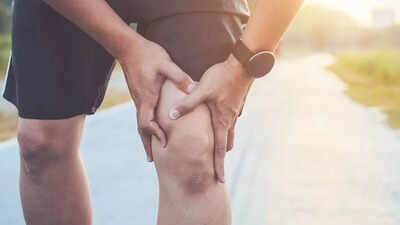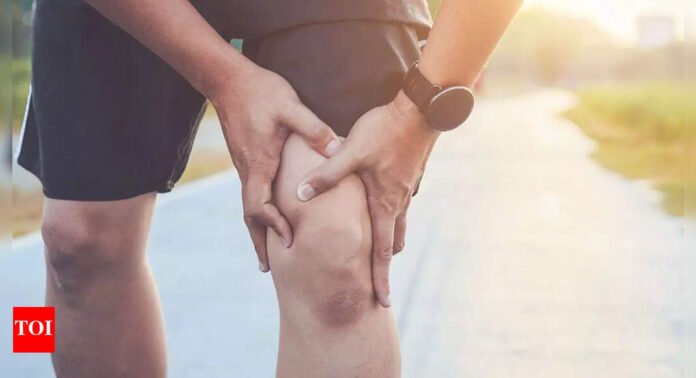Knee Health in Your 30s: Signs, Reasons, and Protection

Knee problems aren’t just for older folks anymore. Many people in their early 30s are now facing knee issues. A recent study from the University of Oulu in Finland found that most people around age 33 already show signs of knee damage. This often happens without any pain.
The study used MRI scans and found that many participants had cartilage damage or bone growths in their knees. Researchers think this silent damage may have been developing for years. Factors like obesity, blood pressure, and genetics play a big role. It’s important to understand the signs, causes, and ways to prevent knee issues as they start to appear earlier in life.
Signs of Early Knee Problems
Even if you don’t feel pain, some subtle signs can indicate knee issues:
- Stiffness after resting: Your knees may feel tight after sitting or resting, especially when you stand up.
- Swelling around the joint: Puffiness or a feeling of fullness around the kneecap could mean inflammation or fluid buildup.
- Clicking or grinding sounds: A grinding or clicking sound when bending or straightening the knee may point to cartilage wear.
- Difficulty with stairs or squatting: Pain or discomfort during movements like climbing stairs or squatting can show early problems.
- Dull aches after activity: If your knees ache after jogging, walking, or standing for long periods, this could signal strain on weakened cartilage.

Causes of Knee Damage in Your 30s
The study found several key reasons for early knee problems:
- High Body Mass Index (BMI): Extra body weight puts more pressure on knee joints. This can speed up cartilage breakdown and lead to joint damage.
- High Blood Pressure and Uric Acid Levels: These can cause low-grade inflammation in the body, affecting joint tissues and overall joint health.
- Family History: If your parents or grandparents had knee osteoarthritis, your risk increases. Genetics can influence cartilage strength and joint resilience.
- Repetitive Stress or Sedentary Lifestyle: Both overuse and underuse can weaken knee stability and lead to structural damage.
- Old Injuries: Past knee injuries, even if healed, can leave instability or changes in joint alignment, raising the risk of early degeneration.
How to Prevent or Slow Down Knee Damage
While you can’t change some risk factors like genetics, several lifestyle changes can help protect your knees:
- Keep a Healthy Weight: Losing even a small amount of weight can reduce pressure on your knees and lower your risk of osteoarthritis.
- Do Low-Impact Exercise: Activities like swimming, cycling, walking, Pilates, or water aerobics are gentle on the knees while strengthening muscles.
- Strengthen Knee Muscles: Focus on the quadriceps, hamstrings, glutes, and hip stabilizers to distribute stress evenly and keep the knee aligned.
- Practice Good Posture: Avoid locking your knees while standing or arching your back when lifting. Proper body mechanics prevent uneven wear and reduce injury risk.
- Eat a Joint-Friendly Diet: Include foods rich in omega-3 fatty acids, antioxidants, and calcium/vitamin D to promote bone and cartilage health.
- See a Doctor for Early Screening: If you have a family history of joint issues or are experiencing symptoms, a physical exam or MRI can help detect early changes.
This research shows that knee damage can start silently in your 30s. If left unchecked, it can lead to chronic pain, reduced mobility, and even early osteoarthritis. Recognizing early warning signs and taking preventive action can delay or avoid long-term joint issues.
Take care of your knees today, and they’ll support you for decades to come.



